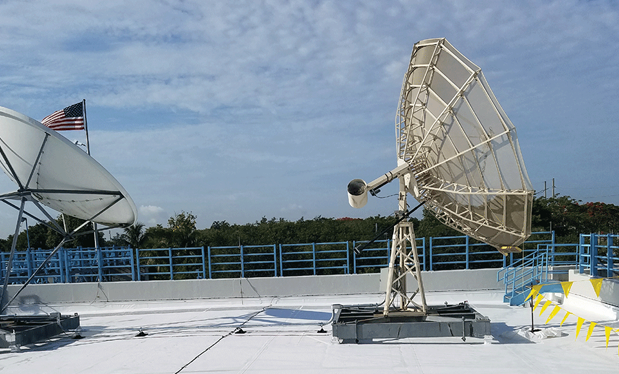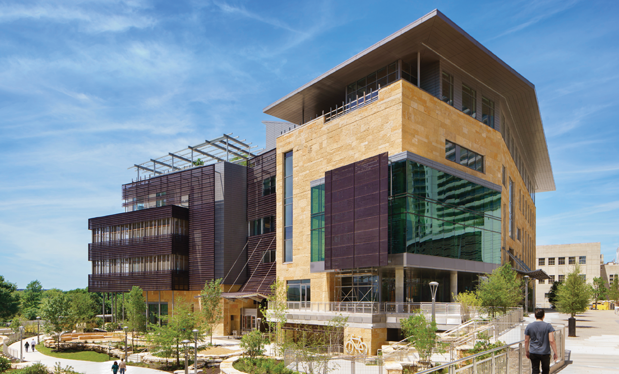National Roofing Partners welcomes new controller

Coker |
National Roofing Partners (NRP) has named Kyrah Coker controller. Coker has more than 20 years of finance experience directing companies from start-up through growth modes.
Coker holds bachelor's and master's degrees in interdisciplinary studies from the University of Texas at Dallas. She previously was a director of finance and operations for a private construction business in Dallas, where she secured and maintained bonded municipal contracts with the City of Dallas and surrounding cities.
"Kyrah has the background and focus NRP needs," says Dale Tyler, president of NRP. "Her financial knowledge and talent is not only important in day-to-day operations but also is critical as we continue our aggressive growth and use of technology through all parts of our business. NRP is fully committed to utilizing technology in communications and processes, providing the best experience for national accounts and facility managers. Kyrah is key to supporting our financial technology solutions while working in tandem with our large commercial roofing contractor network."
Majority of contractors expect to expand staffs during 2018
Seventy-five percent of construction firms plan to expand their payrolls during 2018, according to www.agc.org. The data is based on survey results released by the Associated General Contractors of America (AGC) and Sage Construction and Real Estate in the report, "Expecting Growth to Continue: The 2018 Construction Industry Hiring and Business Outlook."
Contractors who responded to the survey were optimistic regarding demand for all types of construction services as measured by the net positive reading—the percentage of respondents who expect a market segment to expand versus the percentage who expect a market segment to contract. The net positive reading currently is 44 percent for all types of construction, the highest recorded in AGC's Outlook survey series.
Contractors were most optimistic about the private office market segment, with a 22 percent net positive reading. Other transportation and retail, warehouse and lodging segments had a 21 percent net positive reading, and water and sewer construction had a net positive reading of 20 percent. Respondents were slightly less optimistic about growing demand in other segments, including multifamily residential and public building segments, power construction, higher education construction and federal construction.
AGC officials noted 75 percent of construction firms say they will increase their staffs in 2018—a slight increase from 73 percent last year. However, in most cases hiring new staff will expand headcounts only by a slight percentage per firm; about half of firms reported their expansion plans will increase the size of their firms by 10 percent or less.
Despite their optimism, contractors also reported they remain worried about workforce shortages and infrastructure funding. About 82 percent of construction firms expect recruiting and hiring qualified workers will either become more difficult or remain difficult during 2018—an increase from 76 percent in 2017. In addition, 78 percent of firms reported they currently are having difficulty finding qualified workers to hire, which is up from 73 percent at the beginning of 2017.
To address workforce shortages, 60 percent of firms reported they have increased base pay rates compared with 52 percent in 2017; 36 percent have provided incentives and/or bonuses compared with 35 percent in 2017; and 24 percent have increased contributions and/or improved employee benefits to cope with workforce shortages.
AGC officials noted contractors' overall optimism for 2018 likely comes from two assumptions: Tax cuts will lead to stronger demand, and the Trump administration will follow through on its promise to increase investments in infrastructure.
"Expecting Growth to Continue: The 2018 Construction Industry Hiring and Business Outlook" was based on survey results from more than 1,000 firms from 49 states and the District of Columbia. The report and survey are available at www.agc.org.
NRCA accepting Children's Art Contest submissions
NRCA is holding its annual Children's Art Contest, sponsored by A.C.T. Metal Deck Supply, Aurora, Ill., and the International Roofing Expo® (IRE), in advance of National Roofing Week June 3-9. The week will promote the importance of having a roof and the value of professional roofing contractors.
The contest is open to children in grades 1-8 who are relatives of NRCA members and their employees. Group 1 is grades 1-2; Group 2 is grades 3-5; and Group 3 is grades 6-8.
Participants are asked to imagine what roofs will look like in the future. What kind of tools and materials will be used to install a roof? What other uses might a roof have? Children may also consider what they might look like if they were to become roofing professionals.
Winners will be selected by a panel of judges from the Oak Park Art League, Oak Park, Ill. In addition, a people's choice winner from each age group will be named; these winners will be chosen via public online voting.
Winners from each group will receive gift certificates and other prizes and have their artwork featured on all 2018 National Roofing Week materials, as well as additional materials to be displayed at industry events during the year, including NRCA's 132nd Annual Convention and the 2019 IRE in Nashville, Tenn. In addition, the roofing industry relative of the adjudicated winner from each age group will receive two free passes to attend the 2019 IRE.
Entries must be received by April 15. Winners will be announced and notified during National Roofing Week. For more information, including contest rules and an entry form, click here. If you have questions, please contact Charlotte Norgaard, NRCA's media relations manager, at (847) 493-7548 or cnorgaard@nrca.net.
Trump imposes tariffs on solar panels
On Jan. 22, President Trump imposed tariffs on imported solar panels and washing machines; the actions represented his first tariff orders, according to www.washingtonpost.com. The tariff orders come in response to petitions from U.S. manufacturers that have complained for years that an increasing number of imports were affecting their sales.
Trump imposed tariffs of 30 percent on imported solar panels during the first year, which will gradually fall to half that figure in four years. The levies were less severe than those requested by Suniva® and SolarWorld Americas Inc., two companies that sought government relief.
"We are still reviewing these remedies and are hopeful they will be enough to address the import surge and rebuild solar manufacturing in the U.S.," says Juergen Stein, CEO and president of SolarWorld Americas.
The companies' request for protection was opposed by the domestic U.S. solar industry because tariffs lead to more expensive solar panels, which can discourage their use, according to the Solar Energy Industries Association (SEIA). SEIA says the tariffs would cause 23,000 installers, engineers and project managers to lose their jobs during 2018 as billions of dollars in planned investment disappear. Of the 260,000 U.S. workers currently employed in the solar industry, one-third are at long-term risk as a result of the tariffs. And environmentalists say the decision is a setback for the further development of renewable energy.
Trump acted under a provision of U.S. trade law authorizing global or "safeguard" tariffs. The safeguard process leaves the final decision regarding whether to impose trade remedies to the president rather than to the apolitical trade experts who typically decide trade disputes. The tariff decisions came after years of trade litigation that involved frustrated U.S. companies complaining of ineffective trade actions to attempt to resolve unfair foreign trade practices.
Massive Chinese government subsidies and industrial planning are blamed for a surge in China's production of solar cells and modules and the demise of 30 U.S. solar panel makers. China's share of global solar cell production increased from 7 percent in 2005 to 61 percent in 2012, according to the Office of the U.S. Trade Representative.
NRCA member Korellis Roofing becomes employee-owned
NRCA member Korellis Roofing, Hammond, Ind., has transitioned from being family-owned to being employee-owned as part of a succession plan developed during the past year, according to nwitimes.com.
The Korellis family has owned the company, a large roofing contracting operation in northwest Indiana, since 1960 but decided to sell the company to about 30 employees through an Employee Stock Ownership Plan (ESOP).
"We are excited to share the success of Korellis Roofing and to reward our employees for helping us get into the forefront of the roofing industry," says Pete Korellis, president and CEO of Korellis Roofing. "Korellis Roofing is now owned by its employees. It will be difficult to ever sell to an 'outsider.'"
About 120 workers in field crews are excluded because they already have pensions negotiated by their unions.
A growing number of northwest Indiana employers have become employee-owned. A family-owned business may pursue an ESOP when there isn't a family successor to assume business operations.
Korellis Roofing now is 100 percent employee-owned with no changes in management or senior leadership. Korellis intends to stay on as president and CEO for at least three more years but no more than five years.
"Korellis Roofing's culture is much like a family—a high-performance family," Korellis says. "I think my father, George Korellis, would be proud that the foundation he built is now affording this great career opportunity for many deserving employees."
Union workers' pay ends on an upward trend
First-year wage increases negotiated in union labor contracts through Dec. 22, 2017, averaged 2.7 percent—an increase from 2.6 percent in the previous biweekly period, according to Bloomberg BNA.
The pay increase still puts 2017 slightly behind 2016; the average first-year wage increase in late December 2016 was at 2.8 percent. However, the manufacturing sector is showing higher wage increases in 2017 than in 2016. Through Dec. 22, 2017, manufacturing unions negotiated an average 2.5 percent first-year wage increase, which is up from 2.4 percent during the previous biweekly period and higher than the 2.4 percent average in 2016. Nonmanufacturing contracts also showed higher wage increases at 3.7 percent in 2017 compared with 3.5 percent in 2016.
Unions in state and local government workplaces have fallen behind 2017's pace regarding wage increases. Government contracts had an average first-year wage increase of 2.1 percent through Dec. 22, 2017, which is far below the 2.4 percent average for 2016.
When factoring in lump-sum bonuses and other one-time payments, overall average first-year increases show a rise to 3 percent from 2.9 percent two weeks earlier; this still is below the 2016 average of 3.2 percent. When lump sums were included, manufacturing, nonmanufacturing and government contracts all reported lower wage hikes in 2017 compared with 2016.



